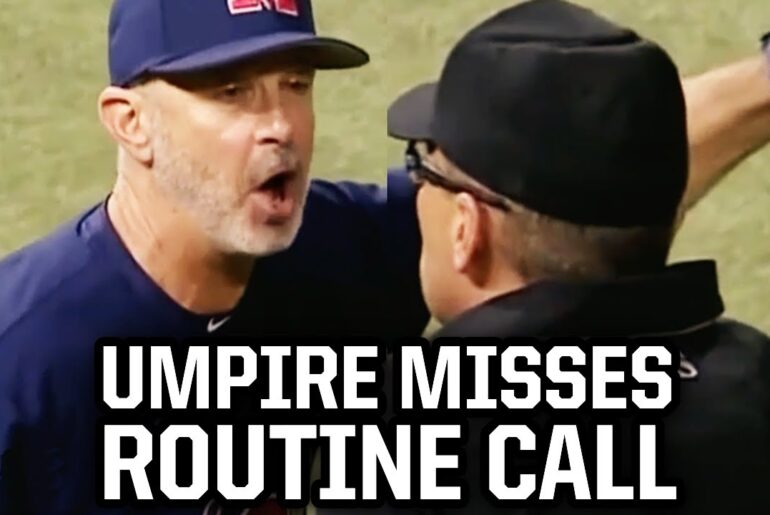The Miami Marlins found themselves in a tight spot, desperately trying to hold off their opponents in the bottom of the eighth inning. However, an unexpected turn of events took place, leading to a controversial dispute between the players and the umpires. This breakdown of the crucial moment is brought to you by SeatGeek, our sponsor for this article.
The Build-Up
As the count reached 3-0, the Marlins faced a precarious situation. Nonetheless, the batter fought back and managed to make it a full count with a 3-2 score. The tension escalated as both teams prepared for the decisive play.
The Time Conundrum
With the game on the line, the batter, positioned in the batter’s box, was expected to be ready for the pitcher’s throw by the eight-second mark. However, an issue arose when the batter failed to step into the box on time, causing a delay. The observant catcher, aware of the time constraints, called the attention of the umpire, signaling that the batter was not ready.
The Umpire’s Response
The umpire, realizing the delay, raised his hand and called for a timeout, momentarily halting the game. However, confusion ensued as the pitcher went ahead and threw the pitch, disregarding the timeout call. The umpire, caught off guard by the pitch, halted the play and assessed the situation.
Seeking Clarity
Amidst the chaos, the Marlins’ coach rushed onto the field, seeking an explanation for the bewildering turn of events. The umpire signaled for a discussion with the other umpires to resolve the matter, promising to provide clarification.
Unraveling the Sequence
Upon reviewing the incident, it became apparent that the batter had arrived late to the batter’s box, prompting the catcher to alert the umpire. The umpire acknowledged the delay by signaling timeout but failed to prevent the pitch from being thrown. This led to further confusion as the umpire did not declare the pitch a ball, which is the customary call when timeout is granted.
Conflicting Perspectives
The crew chief, the senior umpire, downplayed the controversy, asserting that there was no substantial issue at hand. However, the home plate umpire, aware of his misstep, appeared to question his own actions and sought validation from the other umpires. The home plate umpire’s contradictory signals and gestures indicated his uncertainty about the correct course of action.
The Fallout
Despite the heated exchange between the coach and the umpires, the crew chief ultimately ruled the pitch as a ball, allowing the batter to advance to first base. However, this decision did not affect the outcome of the game significantly.
A Lesson in Accountability
The incident showcased the inexperience of the rookie manager, who passionately argued for his team’s rights. The fans in attendance, who had likely purchased their tickets through SeatGeek, were witnesses to the turmoil but remained oblivious to the underlying controversy.
Conclusion
In the end, the dispute between the players and umpires, sparked by a missed timeout call, had minimal impact on the game’s outcome. However, it shed light on the importance of clear communication and accountability within the umpiring crew. Such incidents serve as reminders that even in the heat of competition, fair play and adherence to rules should always prevail.



